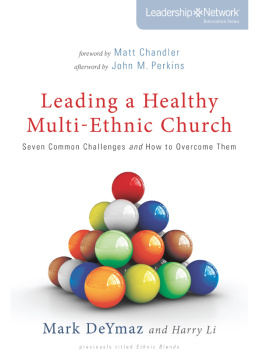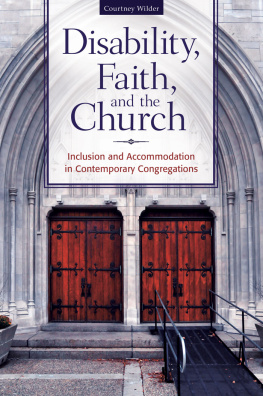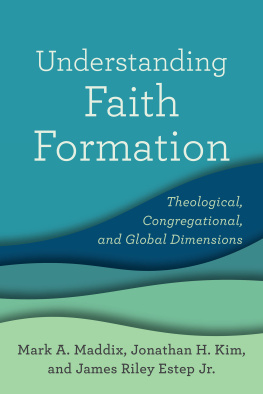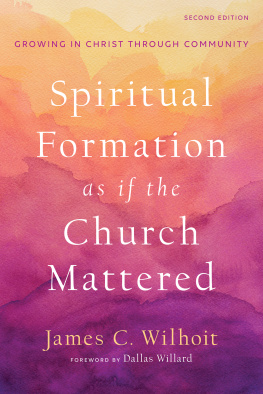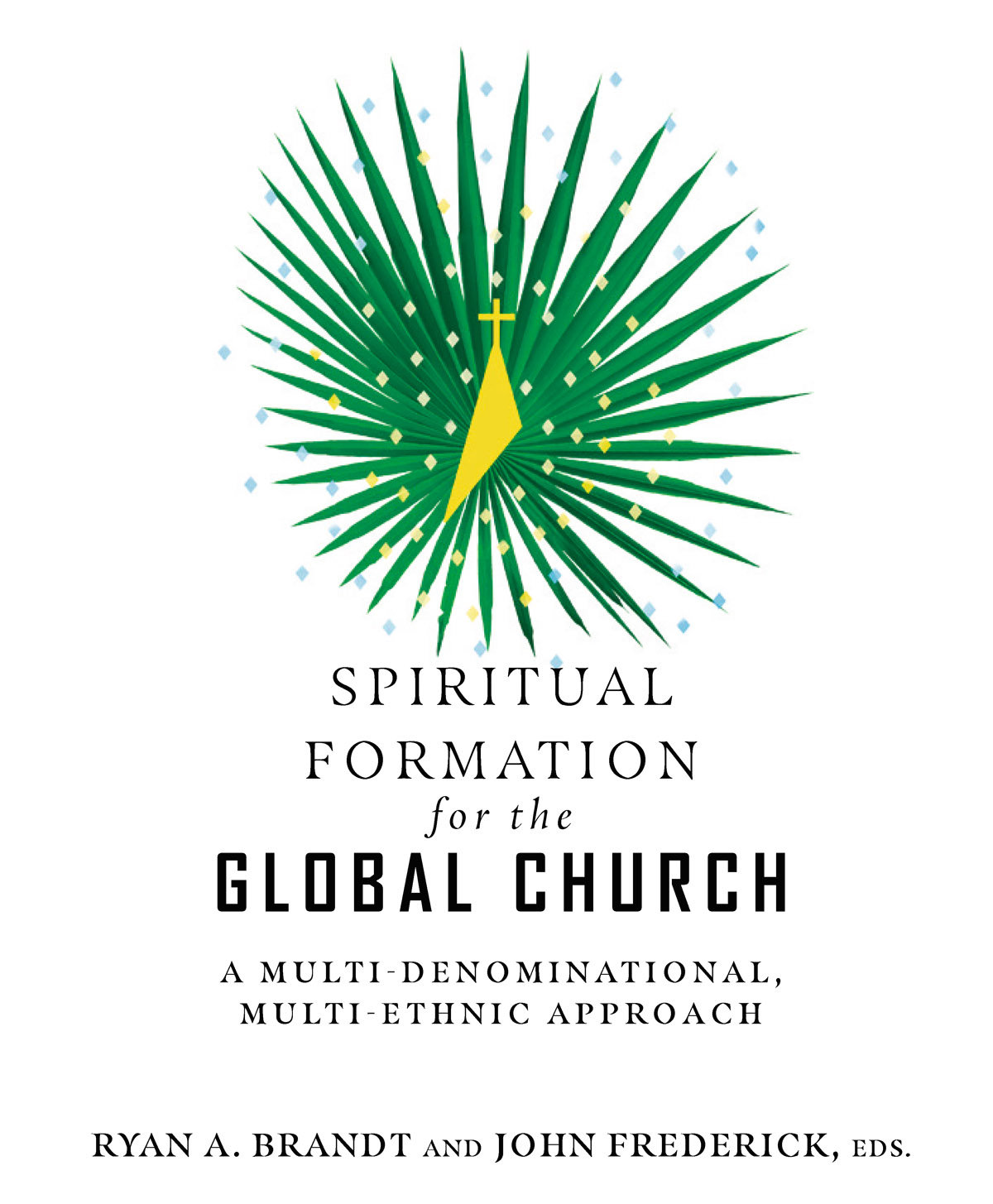Sommaire
Pagination de ldition papier
Guide
InterVarsity Press
P.O. Box 1400, Downers Grove, IL 60515-1426
ivpress.com
email@ivpress.com
2021 by Ryan A. Brandt and John A. Frederick
All rights reserved. No part of this book may be reproduced in any form without written permission from InterVarsity Press.
InterVarsity Pressis the book-publishing division of InterVarsity Christian Fellowship/USA, a movement of students and faculty active on campus at hundreds of universities, colleges, and schools of nursing in the United States of America, and a member movement of the International Fellowship of Evangelical Students. For information about local and regional activities, visit intervarsity.org.
Scripture quotations, unless otherwise noted, are from the New Revised Standard Version Bible, copyright 1989 National Council of the Churches of Christ in the United States of America. Used by permission. All rights reserved worldwide.
The publisher cannot verify the accuracy or functionality of website URLs used in this book beyond the date of publication.
Cover design and image composite: David Fassett
Images: white dirty painted background: Dmytro_Skorobogatov / iStock / Getty Images
Palm branch drpnncpp / iStock / Getty Images Plus
ISBN 978-0-8308-5519-3 (digital)
ISBN 978-0-8308-5518-6 (print)
This digital document has been produced by Nord Compo.
For the church catholic:
May we be conformed further to the image of Christ across continents,
time, and cultures as one family and fellowship of God
the communion of the saints.
ACKNOWLEDGMENTS
PUTTING TOGETHER A VOLUME that aspires to a high degree of global collaboration and theological coherence is a daunting task, but one that has proven to be well worth the effort. The communion of the saints is more than a good idea or an abstract line in a creed; it is the spiritual reality of our supernatural, transdenominational fellowship in the resurrection life of God as the one body of Christ across cultures, continents, and time. What a privilege and adventure it is to be able to explore the faith once delivered to the saints and to learn from one another as a communion of brothers and sisters in the Lord. As the editors, therefore, it is our great joy to express our sincere thanks to the contributors to this volume. The task of editing this book has itself been a spiritually formative process. We have grown in the faith and in our knowledge of God through our contributions and our editorial labors, and for this we are exceedingly grateful.
We likewise are thankful for our excellent experience with IVP Academic, and especially with David McNutt. Weve been consistently impressed with the quality of IVPs catalog, and we count ourselves blessed to be able to see this project to fruition with such a capable, excellent, and exciting publishing house.
Ryan wishes to thank John Frederick for all the fun and productive collaboration in putting this project together. Between the emails and video conferencing, the strategizing and deliberation, we became better friends and attained a greater joy in Christ. Ryan is also grateful to Joshua Farris for their endless discussions about theology and its connection to spirituality in the beatific vision. He would also like to extend thanks to all of his colleaguesespecially Sammy Alfaro, Christina Larsen, Justin McLendon, and Amanda Jenkinsfor their ongoing conversations and collaboration around the college. This project originally arose out of the context of collegial discussions between Johns office and mine, a reminder of the importance of passing conversations in the college hallways and seemingly fleeting visions for future projects. In this vein, Ryan would like to thank his dean, Jason Hiles, for supporting his scholarly endeavors and creating an environment at Grand Canyon University (GCU) where writing and research can thrive. Most of all, he is thankful for the continued support and encouragement from his wife, Laura, and their daughter, Evelyn.
John wishes to express deep gratitude to all of his colleagues through the years. In this season of life, he is particularly grateful for Belinda Hoadley, Janet Nibbs, and Deon Naud at Trinity College Queensland, without whose academic support, endless patience, collegial warmth, and unmatchable administrative and creative skill his experience as a researcher, lecturer, and his second year as an expat in Australia would not have been as fun, rich, or spiritually formative. John wishes to extend thanks to all of his students and colleagues at Trinity College Queensland for allowing him to turn his office into a virtual rubbish bin while he wrote and edited this book. He is also very sorry about the piece of forgotten uneaten cake he left under a stack of crumpled papers for six or seven months near the dry-erase board in his office. It has now been disposed of in a reasonable manner, and therefore, he will not have to attend purgatory for the egregious sin of breaking the protocol of proper office decorum. Lord, hear our prayer. Lastly, John is eternally thankful for the overflow of Gods grace through the sacramental power of marriage and the joy of family. He is especially thankful for his wife Tara and their kids Liam and Zoe.
INTRODUCTION
Ryan A. Brandt and John Frederick
IN RECENT DECADES, the world has undoubtedly grown closer and smaller, becoming a global village through the advent and proliferation of communication technology and the internet. Yet, despite these advances, evangelicals often remain fixed and focused on theological conversations and practices that take place within narrow regional, national, denominational, and racial/ethnic boundaries. This is nowhere more evident than in discussions about spirituality, spiritual formation, and sanctification.
This present volume, Spiritual Formation for the Global Church, is a global, multidenominational, multiethnic effort in which evangelical biblical scholars, theologians, and practitioners from around the world join together to represent the one body of Christ in pursuit of a cohesive yet diverse constructive theology and praxis of spiritual formation for the global church in the twenty-first century. In what follows, we introduce spiritual formation and its recent revival in evangelical circles and provide an overview of the book for the reader.
WHAT IS SPIRITUAL FORMATION?
There are certainly numerous ways to define and approach spiritual formation. With the global volume in hand, the reader can be sure that the different contributors from distinctive backgrounds and denominational heritages will have unique (though often complementary) definitions of and approaches to spiritual formation.
With that being said, it is helpful to provide at least a minimal definition of spiritual formation for those readers less familiar with the subject. While there are many different understandings of spiritual formation out there, including various religious and philosophical perspectives, this book approaches spiritual formation through a Christian perspective. Our definition of spiritual formation will thus assume our Christian heritage. We define spiritual formation broadly to refer to the process by which personal change takes place in Christ by the power of the Spirit. That is, spiritual formation is a Spirit-empowered and Spirit-led transformation of the person into conformity with Christ, who is the image of God. As Christians, we believe that spiritual formation is trinitarian, meaning that it occurs primarily in the context of being conformed to the image of the Son, by the power of the Spirit, to the glory of God the Father. While each contributor will have a unique approach to spiritual formation, this preliminary definition should suffice to provide coherence to the discussions of spiritual formation in the volume as a whole.


